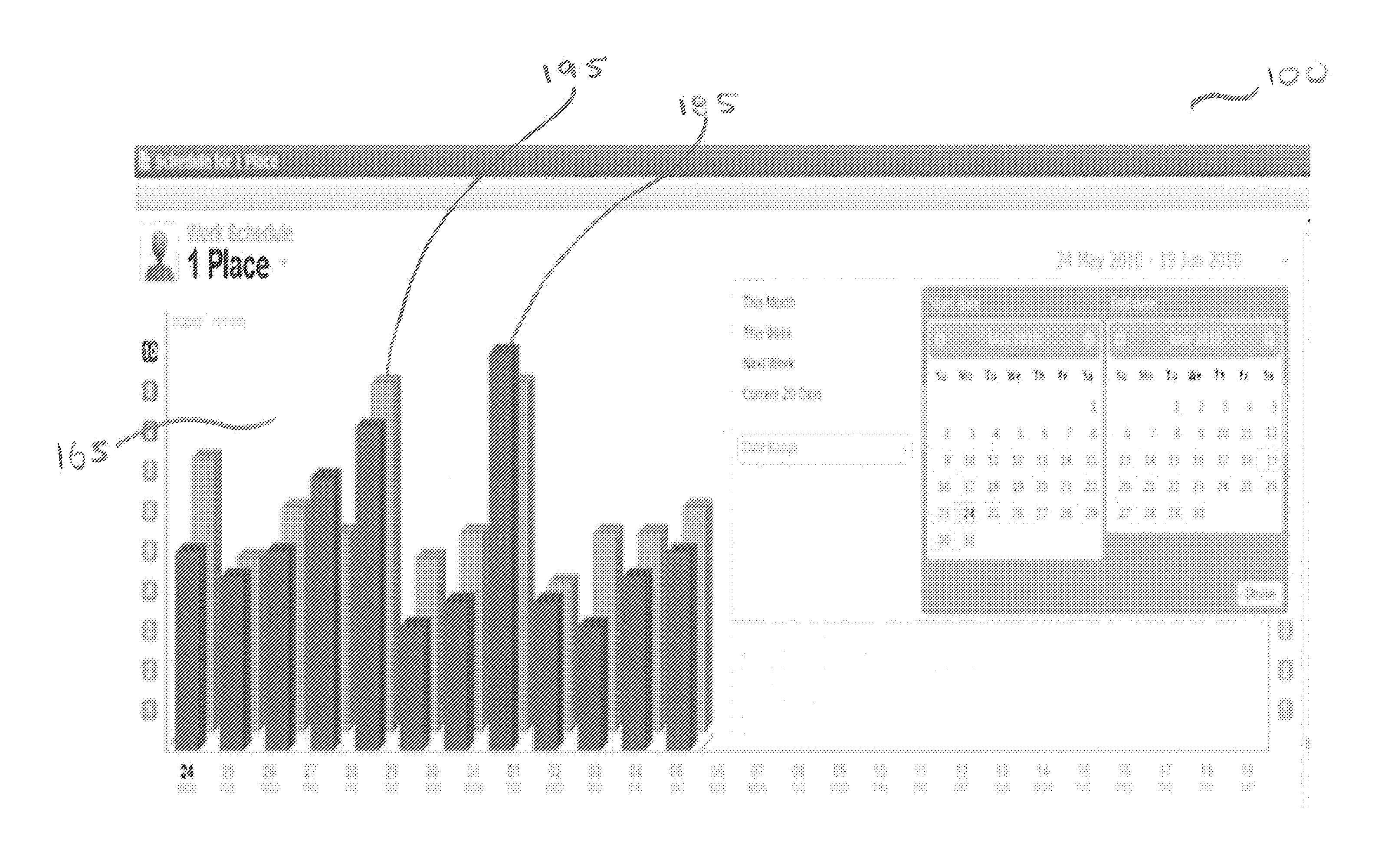However, such task allocation and monitoring systems and methods are static, requiring data to be entered and updated manually, with limited ability to take into account variables that affect the actual performance and management of tasks=(e.g. interruptions, underestimating work required, time liaising with a team or manager to discuss work issues, time spent on other work-related tasks not allocated as part of a time “budget” available to work on scheduled tasks).
Further such task allocation and monitoring systems and methods lack the critical attribute of smart or “optimised” interpretation of the task management.
Specifically, to date this is only a poor mechanism for the allocation of tasks when taking into account human failings in task management.
The
wrench time studies were found to be poor
business management tools for various reasons including the finding that people are very poor at estimating how long a task will take.
have found that those who perceive themselves as good time managers tend to not to be able to estimate time passing.
Individuals also are overly confident that one's own project will proceed as planned, even while knowing that the vast majority of similar projects have run late.
Therefore, the
estimation made by individuals is a belief which leads to poor time scheduling.
Thus, the planned time and
resource allocation schedule is not adhered to because they are not accurate.
Individuals also often estimate time using their memory, which via studies, has been a very poor time estimator when it comes down to exact quantitative estimates.
The inability to judge how long a task will take is a universal problem.
The influence of these biases are also variable between people: individuals in positions of power are particularly poor at judging time required, because powerful people focus on getting what they want, more than acknowledging the time and potential obstacles that stand in their way.
Task reports which use the user's estimates of the task alone, when scheduling tasks and subtasks on a time and / or calendar basis have consistent and significant problems due to the reliance on human estimates of task duration and planning which underpin the scheduling.
This takes the form of a
list of tasks allocated to a calendar, which gives poor future scheduling of the tasks and often is used for as a
list without the reliance on the time allocated.
Also, adapting to change in a schedule of tasks due to delays in completing tasks or the introduction of previously unscheduled tasks is very difficult, and often results in the progressive schedule being abandoned;
1) specific resource requirement(s) and the availability of such resources are not highlighted to resource manager(s) when they are undertaking the activity of forward scheduling;
2) weighting by a user on the time and resources required for a particular task(s) and / or subtasks has considerable variance and is not reflected on the true time or resources required; and
3) non-uniformity between different users of known task management systems and methods produces variable results often resulting in, for example, a manager allocating tasks to be performed with the same allocation for all individuals, which in reality there is no “one size fits all” approach; and
4) users find it difficult to update or re-estimate the time a given task will take to complete in a way that the resource manager(s) are able use this updated information in their activity forward scheduling. This issue increases in importance as the
granularity of the tasks being managed becomes more fine-grained and as the number of users increases
However, problems with this technology include:1) access to the technology and to the assessment—the complexity of such systems often excludes many participants;2) the need for pre-preparation of the tasks by a
project manager to enable the scheduling of the tasks through pre-sorting, assessing and appraising the tasks before placing the tasks into task management systems / tools; and3) the task management methods, systems and tools need to operate under
project management conditions and not within the broad range of scheduling conditions that exist
in real life—“bump this”, “move that”, “did we consider this”.
Any technology that assumes the project will progress completely as expected will at very least suffer user skepticism, and more likely will be abandoned by users as the technology does not help them in scheduling their work.
This presents a problem for current systems with their focus on
data input and calendars for scheduling, as they do not provide
granularity and accuracy to enable automated task management—either the information is not entered or it is not updated and therefore the data remains static and does not account for factors that can affect scheduling.
Task schedulers currently have problems with:1. dynamically updating a schedule in a timely manner; and2. capturing more accurately the time taken to perform tasks (and hence also capturing task over flow).
Therefore, these solutions cannot provide added requirements such as priority assessment of task allocation readily available to a user or colleagues when and where required.
 Login to View More
Login to View More  Login to View More
Login to View More 


